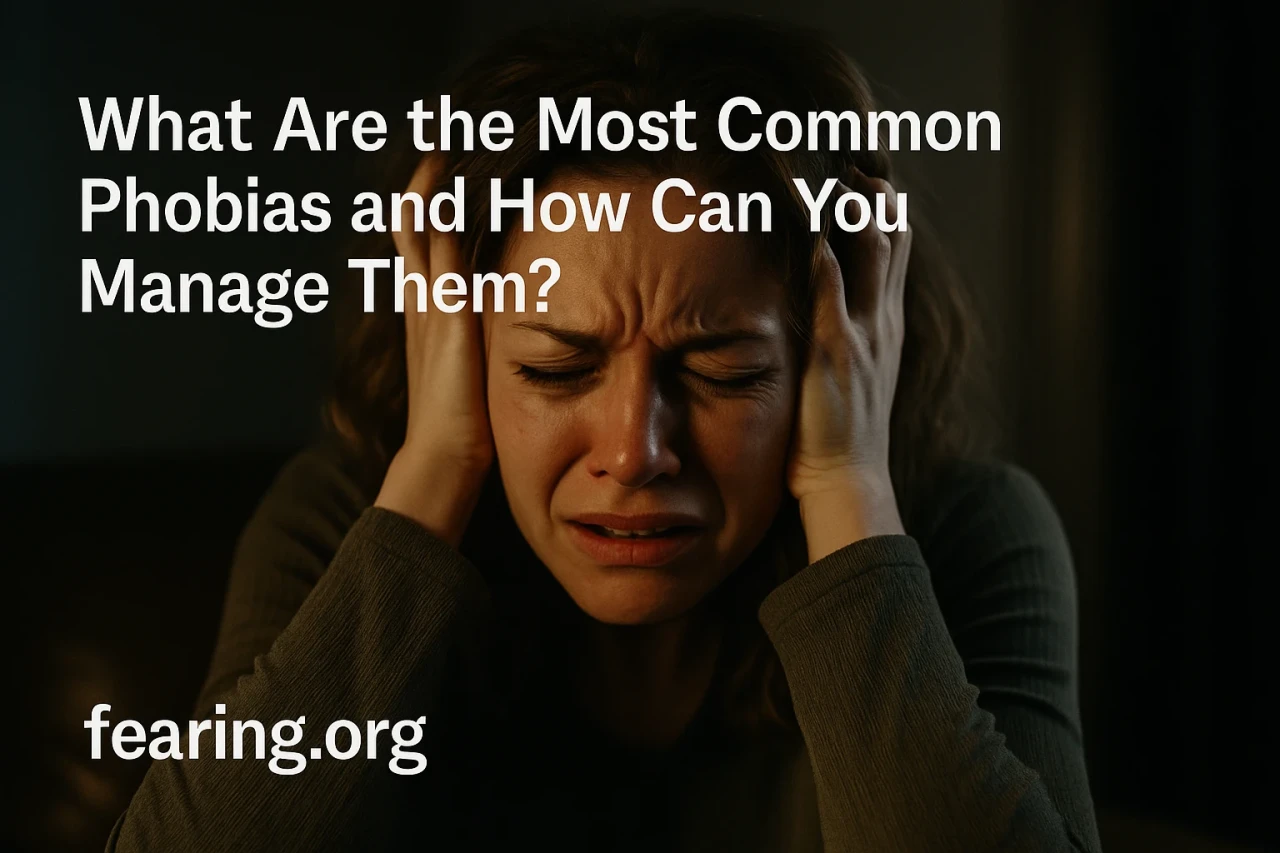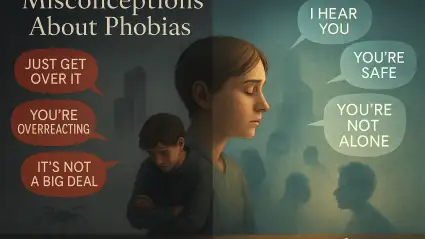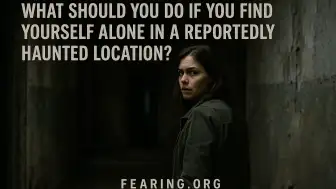Fear is a survival instinct — an ancient signal that helps protect us from danger. But when fear becomes overwhelming, irrational, or constant, it turns into something else entirely: a phobia. Phobias aren’t just “being scared” of something; they’re powerful, involuntary reactions that can disrupt daily life. From fear of flying to panic at the sight of a spider, phobias are among the most common anxiety disorders in the world today.
The good news is that while they can feel uncontrollable, phobias are highly manageable — and often treatable — with the right approach. Understanding what triggers them is the first step to regaining control.
Understanding Phobias: When Fear Crosses the Line
Everyone experiences fear, but a phobia is different. It’s not logical, and it doesn’t respond to reason. The brain reacts as if the danger is real, even when it isn’t. For some, that might mean avoiding elevators, for others, refusing to get on an airplane or even look out a window from a tall building.
Phobias are classified into three main types:
Specific (Simple) Phobias — Fear of a specific object or situation, such as animals, heights, or needles.
Social Phobia (Social Anxiety Disorder) — Intense fear of being judged, embarrassed, or humiliated in social situations.
Agoraphobia — Fear of being trapped in situations where escape might be difficult, such as crowds or public transport.
Each type can range from mild unease to severe panic attacks, often triggered without warning.
The Most Common Phobias
1. Arachnophobia — Fear of Spiders
One of the most well-known phobias, arachnophobia causes an exaggerated fear response even to harmless household spiders. Evolution may play a role — our ancestors learned to avoid venomous creatures — but media and cultural portrayals often reinforce it.
Management Tip: Gradual exposure therapy works best. Start by looking at pictures of spiders, then videos, and eventually being near one in a controlled setting. Pairing this with breathing exercises helps retrain the fear response.
2. Acrophobia — Fear of Heights
Acrophobia affects millions who feel dizzy, nauseated, or panicked when faced with tall places, even when completely safe. Elevators, balconies, and glass floors can all trigger the response.
Management Tip: Virtual reality therapy has become an effective modern tool. By safely simulating height exposure, it helps desensitize the brain while teaching grounding techniques.
3. Claustrophobia — Fear of Enclosed Spaces
Whether it’s elevators, tunnels, or airplanes, claustrophobia can cause intense distress when movement feels restricted. People with this fear often avoid crowded spaces or long car rides.
Management Tip: Focused breathing and mindfulness help reduce the sense of being trapped. Exposure, combined with relaxation, allows gradual desensitization. In severe cases, cognitive behavioral therapy (CBT) helps reshape thought patterns around confinement.
4. Aerophobia — Fear of Flying
Despite air travel being statistically safe, aerophobia remains widespread. It often combines fear of heights, lack of control, and catastrophic thinking.
Management Tip: Education and preparation are key. Understanding flight mechanics and turbulence helps reduce irrational thoughts. Many benefit from airline-sponsored “fear of flying” courses or therapy programs focusing on cognitive restructuring.
5. Trypanophobia — Fear of Needles or Injections
This phobia often begins in childhood and persists into adulthood. For some, even the thought of a medical procedure can cause dizziness or fainting due to a sudden drop in blood pressure.
Management Tip: Practicing applied tension (tensing and releasing muscles) can prevent fainting. Informing medical professionals in advance ensures a supportive environment during procedures.
6. Social Phobia — Fear of Being Judged
More than shyness, this phobia causes crippling anxiety in public settings — from meetings to casual conversations. It stems from deep self-consciousness and fear of humiliation.
Management Tip: CBT is highly effective. It helps reframe negative thought cycles and encourages gradual participation in social interactions. Breathing control and grounding exercises can help manage immediate anxiety.
7. Agoraphobia — Fear of Open or Unsafe Spaces
People with agoraphobia often fear losing control in public places, leading them to avoid crowds or even leaving home. It’s not the open space itself that’s frightening — it’s the perceived inability to escape.
Management Tip: Step-by-step exposure is essential. Begin with short trips outdoors and expand comfort zones over time. Professional therapy can help reintroduce mobility and reduce avoidance behavior.
8. Mysophobia — Fear of Germs or Contamination
This fear intensified during and after the global pandemic. While hygiene awareness is healthy, mysophobia leads to compulsive cleaning or isolation.
Management Tip: Learning to differentiate between caution and control helps. Therapy focusing on gradual tolerance to normal environmental exposure can restore balance.
9. Cynophobia — Fear of Dogs
Often rooted in childhood experiences or trauma, cynophobia persists even when individuals intellectually know most dogs are harmless.
Management Tip: Exposure therapy with calm, trained animals can rebuild trust. Combining this with relaxation exercises helps override conditioned fear.
10. Thanatophobia — Fear of Death or Dying
This existential phobia is common but rarely discussed. It manifests as intrusive thoughts about mortality and can lead to generalized anxiety or insomnia.
Management Tip: Talking openly about death — through therapy, philosophy, or support groups — reduces the taboo and helps individuals find peace with the concept of impermanence. Mindfulness and acceptance-based practices are especially effective.
How to Manage Phobias: Practical Approaches
Overcoming a phobia doesn’t mean eliminating fear; it means changing how you respond to it. Modern psychology offers several approaches proven to help:
Cognitive Behavioral Therapy (CBT): The gold standard for treating phobias. It teaches individuals to identify irrational thoughts, challenge them, and replace them with realistic perspectives.
Exposure Therapy: Gradual, safe exposure to the feared object or situation desensitizes the emotional response. The brain learns that fear doesn’t always lead to danger.
Mindfulness and Relaxation Techniques: Breathing control, meditation, and grounding exercises regulate physical anxiety symptoms.
Medication (if necessary): In some cases, short-term use of anti-anxiety medication supports therapy progress.
Support Groups and Education: Sharing experiences normalizes fear and builds motivation to overcome it.
Why Facing Fear Works
Avoidance is the oxygen that keeps phobias alive. Every time you avoid what scares you, the brain learns that avoidance equals safety. Confronting fear gently and consistently rewires that connection, teaching your mind that discomfort can exist without catastrophe.
Progress is gradual — some days will feel harder than others — but each step forward, no matter how small, reclaims part of your freedom.
Living Beyond Fear
Phobias are powerful, but they don’t define you. Understanding how they work is the first act of courage. Seeking help is the second. Managing a phobia isn’t about never feeling fear again — it’s about feeling fear and moving forward anyway.
With patience, self-compassion, and the right tools, even the most deeply rooted phobias can loosen their grip, turning fear from an obstacle into a teacher — one that reminds us how resilient the human mind truly is.
















